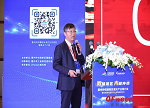7.30-8.1 全数会2025(第六届)机器人及智能工厂展
火热报名中>>
微型激光器加速干细胞研究
Small is beautiful
“The laser systems previously used in stem cell studies have tended to be large, expensive, and shared between teams of researchers,” notes Spencer. “The economics of this field is now driving researchers towards the use of multiple smaller laser systems housed within their own facilities, both to reduce the expense and to avoid any risk of contamination. Our laser systems bring that goal within their reach.”
The Hamilton Thorne microscope objectives and their incorporated laser sources can be screwed into the turret of most standard inverted or upright microscopes. An additional visible beam indicates the target location to the researcher, and they can bring the laser to bear almost as easily as they would change magnification.
Miniaturization has involved some careful emitter design, according to CTO Diarmaid Douglas-Hamilton. “We are free to select almost any diode that suits our basic requirements, but then we make certain changes to the way the source operates to ensure the output parameters match our needs,” he says.
“The power output and pulse length are easily controlled by the user within limits that keep the laser system qualified as a Class 1 device. Typical pulse duration is less than 600 µs, with a maximum energy per pulse of below 180 µJ. The spot size ranges from 3 to 4 µm.”
The laser’s alignment is locked to the optical axis of the objective during manufacture, once the optimum translational and angular alignments are achieved and the beam quality is satisfactory – meaning that no further adjustment by the user is required.
Looking to public markets
Originally founded in 2001, Hamilton Thorne went public in 2009 after spinning off its molecular diagnostics unit to Thorne Diagnostics the previous year. It is quoted on Toronto’s TSX Venture exchange, a public venture capital marketplace for emerging companies.
The firm recently announced that total sales increased by 22% year-on-year to $1.4 million for the first quarter of 2011. Nonetheless, that quarter also showed a net loss of $746,000, widening 31% over the same period of the previous year, and the company has historically incurred losses associated with the development of its products.
“Earlier losses related to our development of a molecular biology technology which is now nearing commercialization and has been spun off into a separate entity,” explained Spencer. “The current losses are part of the corporate development plan to scale sales and marketing and expand infrastructure to support continued growth.”
That expansion plan comes off the back of a $1.25 million debentures issue in the second half of 2010, which the company says was designed to accelerate the development of new products.
But more investment is needed, and the next step for Hamilton Thorne is a return to public markets, Spencer says: “The company has major institutional and angel investors who remain extremely supportive, placing the company in a comfortable financial position. However, we do plan a significant raise on the public markets within the next year.”

图片新闻
最新活动更多
-
7.30-8.1火热报名中>> 全数会2025(第六届)机器人及智能工厂展
-
7月30-31日报名参会>>> 全数会2025中国激光产业高质量发展峰会
-
7.30-8.1马上报名>>> 【展会】全数会 2025先进激光及工业光电展
-
免费参会立即报名>> 7月30日- 8月1日 2025全数会工业芯片与传感仪表展
-
精彩回顾立即查看>> 锐科激光《锐见·前沿》系列前沿激光应用工艺分享
-
精彩回顾立即查看>> 维度光电·引领光束质量分析应用全新浪潮【免费下载白皮书】
推荐专题







 分享
分享




























发表评论
请输入评论内容...
请输入评论/评论长度6~500个字
暂无评论
暂无评论